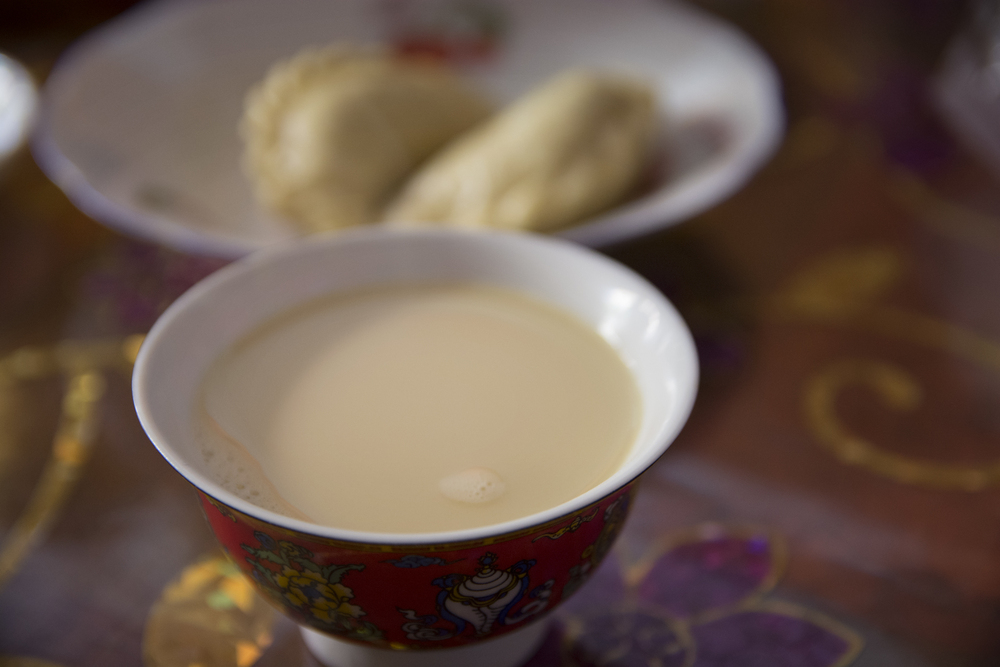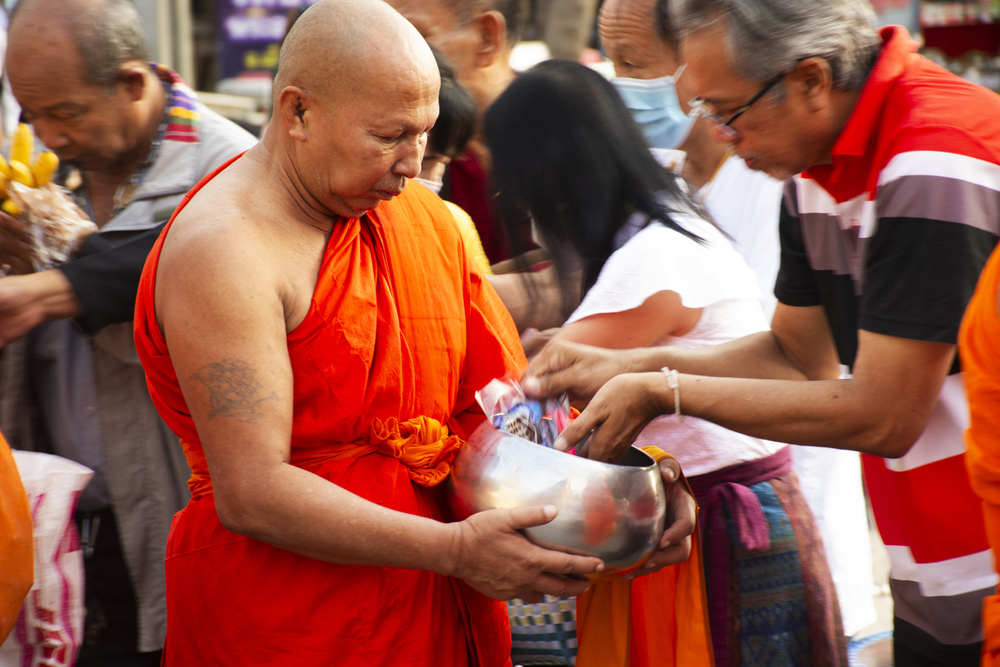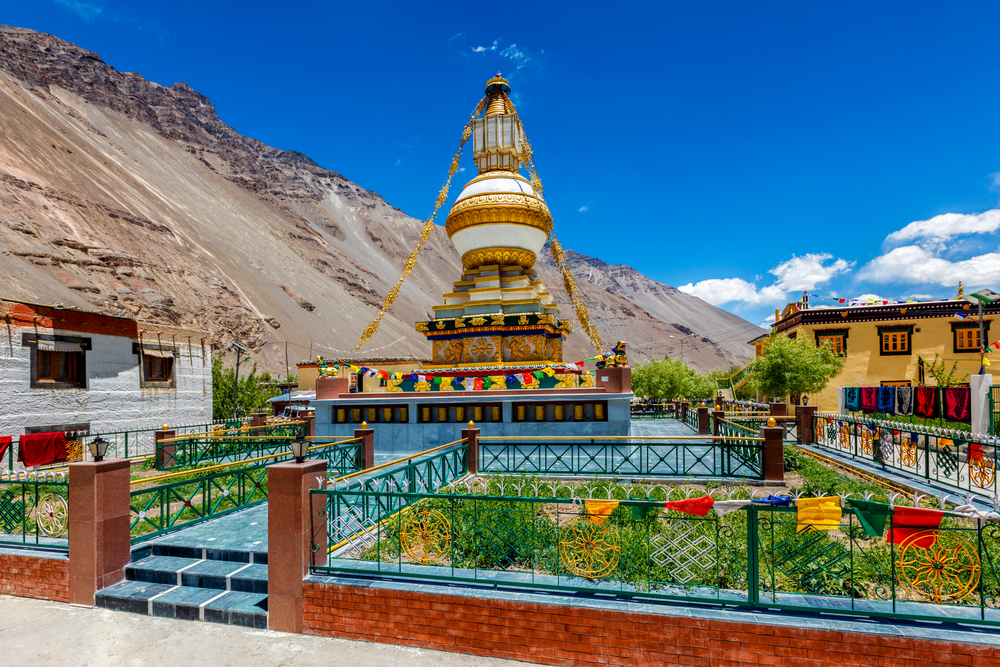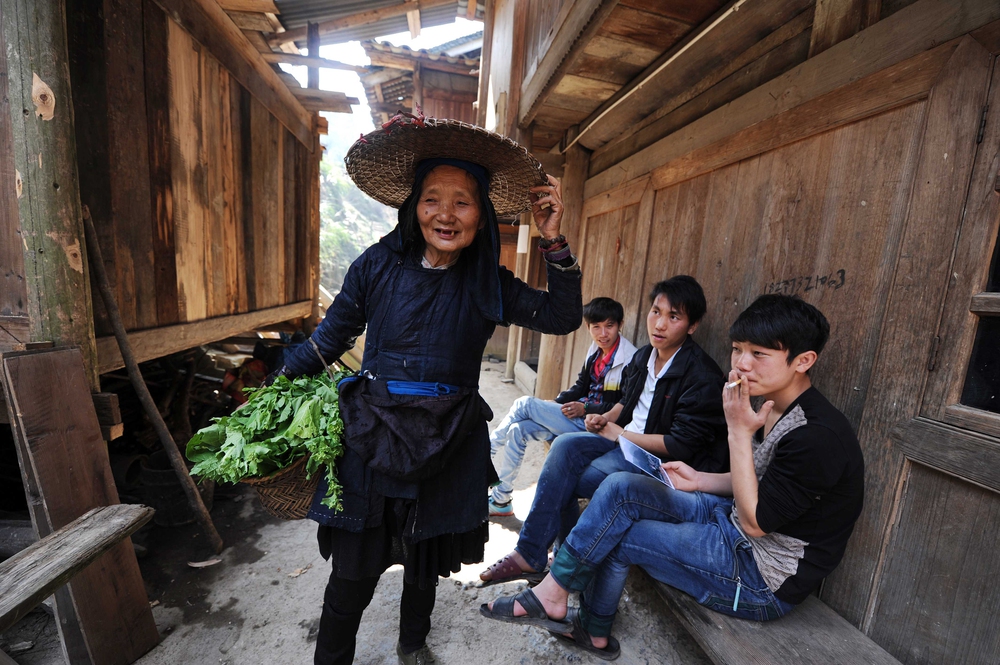High in the Himalayan plateau, where breathing comes hard and the sky looms close, Tibetan monasteries have stood for centuries. These remarkable places – some clinging to mountainsides above 15,000 feet – preserve ancient rhythms despite modern encroachments.
For visitors accustomed to our frantic world, stepping into monastic life delivers a shock to the system. Everything slows down. Priorities shift. Time flows differently. Here are 20 things about Tibetan monastery life that flip your perspective on what actually matters.
The Day Begins Before Dawn

Monks rise around 3:00 AM – long before sunrise and without hitting snooze. A lone monk blows a conch shell through dark hallways – the monastery’s living alarm clock. Young novices struggle most, fighting heavy eyelids during morning prayers.
This pre-dawn schedule isn’t random but deliberate – Buddhist teachings suggest the mind achieves the greatest clarity during the early hours before the world’s distractions multiply. There are no gentle wake-up routines here – just an immediate transition from sleep to spiritual practice.
First Actions Are Spiritual, Not Digital

While most people check phones within seconds of waking, monks begin with spiritual practices. Many perform prostrations – full-body exercises where they repeatedly stretch onto the floor while reciting mantras. Others make water offerings at small altars in their quarters.
These first conscious moments focus inward rather than outward – setting intentions before engaging with daily tasks. The contrast with our reflexive digital morning habits couldn’t be starker – awareness over information, presence over connectivity.
Like Travel Pug’s content? Follow us on MSN.
Morning Debates Sharpen Minds

Forget silent meditation – many monasteries ring with philosophical combat each morning. Monks engage in formal debates where challengers test defenders through aggressive questioning.
These aren’t polite discussions but intellectual sparring matches. Challengers emphasize points with dramatic hand claps and foot stomps – while defenders must remain seated, responding with logical precision. These centuries-old practices develop mental sharpness and deep understanding through confrontation rather than passive study – challenging Western stereotypes about monastic life being purely contemplative.
Meals Happen in Mindful Silence

The main meal – served mid-morning – takes place in vast halls where hundreds eat together without speaking. Just the sounds of food being consumed and occasional bells.
Each monk uses a wooden bowl they maintain themselves – different sections for different foods. Before eating, prayers acknowledge donors and express wishes that all beings find nourishment.
This focused attention during meals makes our distracted eating habits – scrolling phones, watching screens, half-listening to conversations – look like exercises in mindlessness rather than nourishment.
The Menu Never Changes – By Design

Monastery kitchens prepare nearly identical meals daily – usually vegetarian fare with tsampa (roasted barley flour), vegetables, and butter tea. This culinary monotony serves spiritual purposes.
By removing food variety, residents avoid developing attachments to particular flavors. Meals become simple nourishment rather than entertainment or reward. Many monasteries grow vegetables during warmer months – turning harvest into communal activities.
This deliberate simplicity challenges modern food culture with its endless variety and constant stimulation of the palate.
Like Travel Pug’s content? Follow us on MSN.
Butter Tea Flows Continuously

That distinctive drink – Tibetan butter tea (po cha) – keeps flowing throughout the day like coffee in an office. Made from tea leaves, yak butter, and salt – this savory beverage shocks Western palates expecting sweetness.
Monks drink astonishing quantities – 30-40 cups daily in cold months when extra calories help survival at high altitudes. The constant preparation creates characteristic sounds and smells – butter churns working, the unmistakable aroma of yak butter warming, refusing an offered cup?
It is considered quite rude, though most visitors struggle with their first encounter with this acquired taste.
Possessions Remain Minimal – By Choice

Despite decades of residency, most monks own tiny – religious texts, ritual items, a few robes, and necessities. Senior monks who’ve lived monastery life for 60+ years often possess barely more than novices who arrived recently.
This simplicity stems from Buddhist teachings about attachment creating suffering – not from imposed restrictions. Living spaces appear nearly empty compared to our homes, bursting with accumulated stuff.
Interestingly, many visitors report feeling strangely liberated rather than depressed when witnessing this material simplicity – as if glimpsing freedom from constant acquisition.
Work Functions as Meditation

Daily chores – sweeping courtyards, washing robes, preparing food – aren’t interruptions to spiritual practice but extensions of it. Monks approach physical labor with the same mindfulness brought to formal meditation—no background entertainment, no rushing to finish.
The work itself becomes contemplative through complete attention to each movement. This integration of mindfulness into ordinary activities offers the most applicable lesson for modern lives – the possibility of transforming mundane tasks through quality of attention rather than avoiding them.
Like Travel Pug’s content? Follow us on MSN.
Technology Exists but Doesn’t Dominate

Contrary to stereotypes, many monasteries use modern technology where practical—solar panels power limited lighting, communication devices connect remote locations, and educational tools assist learning. The difference? Technology serves specific purposes without controlling daily rhythms.
No constant notifications interrupt meditations, and no screens command attention during every free moment. This balanced approach offers thought-provoking examples for societies increasingly aware of technology addiction but struggling to establish healthier boundaries with digital tools.
Silence Pervades Most Hours

Extended periods pass without human voices—just wind through prayer flags, distant chanting, occasional bells, and natural sounds. This acoustic environment bears almost no resemblance to the constant background noise filling modern life.
The silence isn’t merely the absence of sound but the presence of something positive—space for clarity and inner stillness. Many visitors initially find this quietude uncomfortable, even anxiety-producing, before experiencing its restorative effects.
The monastery’s comfort with silence highlights alternatives to the sound saturation that increasingly fills even supposedly “quiet” modern environments.
Conflict Resolution Happens Differently

Arguments occur in monasteries just like anywhere humans gather – but resolution follows distinctive patterns emphasizing harmony above vindication. Senior monks often mediate using Buddhist principles rather than imposing judgments.
The process focuses on understanding the motivations beneath conflicts rather than simply determining who’s right. Personal meditation upon anger typically precedes group discussion. This approach contrasts sharply with adversarial conflict models predominant in modern contexts – offering alternative frameworks for addressing interpersonal tensions without creating winners and losers.
Like Travel Pug’s content? Follow us on MSN.
Elders Receive Profound Respect

Image Credit: DepositPhotos
This respect for accumulated experience challenges the contemporary emphasis on innovation, which often dismisses traditional knowledge as outdated. The resulting intergenerational harmony creates stability and continuity, which is increasingly rare in rapidly changing societies where the new constantly replaces the established.
Laughter Erupts Frequently

Despite serious spiritual purposes and disciplined schedules, monasteries ring with surprising amounts of laughter. Senior monks display playful humor during teaching, and younger residents engage in good-natured teasing between duties.
This joyfulness contradicts Western stereotypes about monastic life being glumly austere. Buddhist philosophy itself contains elements emphasizing absurdity and cosmic humor—perspectives that manifest through everyday lightness rather than severity.
Visitors often express surprise when they discover this frequent laughter among practitioners of demanding spiritual systems.
Astrology and Medicine Coexist

Modern visitors raise eyebrows when they discover traditional Tibetan astrology and medicine practiced alongside Buddhist philosophy. Many larger monasteries maintain departments for these traditional sciences, with specialists consulting astronomical charts or preparing herbal remedies.
This integration reflects Tibetan Buddhism’s comprehensive approach to existence – addressing physical, mental, and cosmic dimensions rather than separating them into distinct categories. These sophisticated systems demonstrate alternative knowledge frameworks that Western scientific paradigms typically dismiss despite their practical effectiveness within cultural contexts.
Like Travel Pug’s content? Follow us on MSN.
Art Creation Serves Spiritual Growth

The creation of intricate artwork – from thangka paintings to sand mandalas – forms regular components of monastery life. These activities aren’t decorative hobbies but spiritual disciplines developing concentration and impermanence awareness.
Those famous sand mandalas, created over weeks only to be ritually destroyed upon completion, powerfully embody Buddhist teachings about attachment and transience. Monks creating art aren’t considered separate “artists” but practitioners using visual means for spiritual cultivation – challenging Western conceptions separating art from religious practice.
Nature’s Rhythms Guide Activities

Despite consistent daily schedules, monastery life adjusts to seasonal changes and natural cycles. Summer brings different activities than winter; full moon days involve special practices; festivals mark astronomical transitions.
This attunement to natural patterns – largely absent from electrically illuminated modern schedules that proceed identically regardless of season – maintains connections between human communities and broader cosmic rhythms.
Weather directly impacts daily life without technological buffers – heavy snowfall might halt certain activities while spring thaws enable others.
Death Remains Ever-Present in Conversation

Unlike societies that sequester death discussions in hospitals or funeral contexts, monastery culture regularly incorporates mortality awareness into daily life. Meditation practices explicitly contemplate physical decomposition; philosophical debates reference death’s inevitability; casual conversations include mortality references without awkwardness.
This integration stems from the Buddhist emphasis on impermanence as a fundamental reality rather than an uncomfortable topic best avoided. Many visitors report profound shifts regarding their mortality fears after experiencing this normalized death discourse – suggesting alternative approaches to life’s greatest certainty.
Like Travel Pug’s content? Follow us on MSN.
Education Spans Decades, Not Years

Monastic education follows timescales barely comprehensible to societies where learning paths conclude within defined periods. Senior monks study specific texts for 20+ years, gradually uncovering deeper layers of meaning through increasingly subtle analysis.
Novices understand they’ve begun learning journeys potentially spanning their entire lives. This approach values depth over breadth mastery over survey knowledge.
It recognizes certain wisdom as accessible only through extended contemplation rather than accelerated information processing – challenging our emphasis on quick acquisition and measurable outcomes.
Visitors Receive a Genuine Welcome

Despite maintaining intensive practices and structured routines, most monasteries show remarkable openness to outsiders. Their hospitality – offering butter tea, answering questions, sharing ceremonies – stems from Buddhist principles regarding compassion toward all beings rather than tourism considerations.
Even remote monasteries typically welcome travelers who make difficult journeys to reach them. This generous reception by communities that could easily justify isolation demonstrates the practical application of Buddhist teachings about interconnection and compassion – contrasting sharply with commercialized hospitality where welcome becomes transactional rather than genuine.
Community Supersedes Individuality

While Western cultures increasingly celebrate individual expression and achievement, the monastery structure places community functioning above personal distinction. Members subordinate individual schedules, preferences, and sometimes talents to collective needs and traditional practices.
Yet this subordination doesn’t create repressive conformity but a relatively shared purpose and identity. The resulting social dynamic offers alternatives to contemporary individualism – showing how personal fulfillment might arise through community contribution rather than self-actualization pursued in relative isolation.
Like Travel Pug’s content? Follow us on MSN.
Dreams Receive Serious Attention

Those nighttime experiences most moderns dismiss as neural noise hold significant importance in monastery life. Monks regularly discuss dreams during morning gatherings, with senior practitioners interpreting symbolic content.
Some monasteries maintain dream journals where noteworthy experiences are recorded. Certain dreams might be understood as visitations from teachers or deities, offering guidance for waking decisions. This serious attention to dream consciousness reflects the view that all mind states provide opportunities for insight—suggesting permeable boundaries between consciousness states rather than hierarchy, with wakefulness alone valued.
The daily rhythms of Tibetan monasteries offer profound counterpoints to our speed-obsessed, materially focused world. These ancient practices present living alternatives to dominant assumptions about what constitutes meaningful human existence—alternatives increasingly relevant as societies confront the limitations of consumer culture and digital hyperconnection.
More from Travel Pug

- Cities Growing so Fast You Won’t Recognize Them in 10 Years
- 13 Destinations Where Tourists Regularly Regret Their Trip
- 20 Obscure WWII Sites Even History Buffs Don’t Know About
- 10 Under-the-Radar Mountain Towns That Are Both Affordable and Beautiful
- 20 Abandoned Places That Feel Like Real-Life Post-Apocalyptic Movie Sets
Like Travel Pug’s content? Follow us on MSN.
